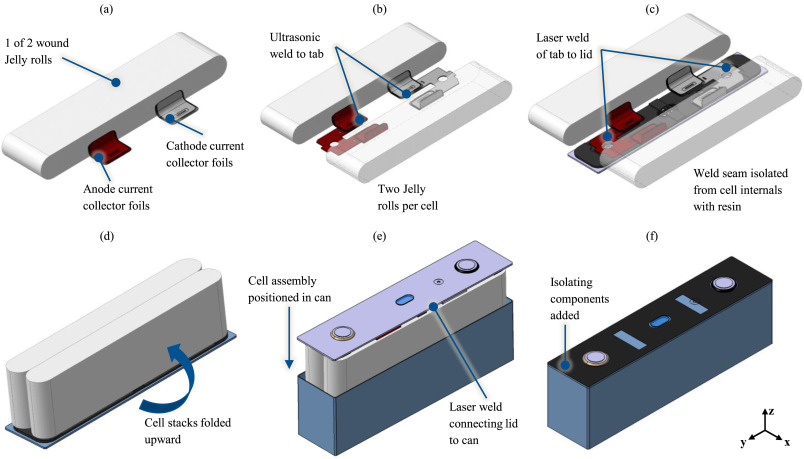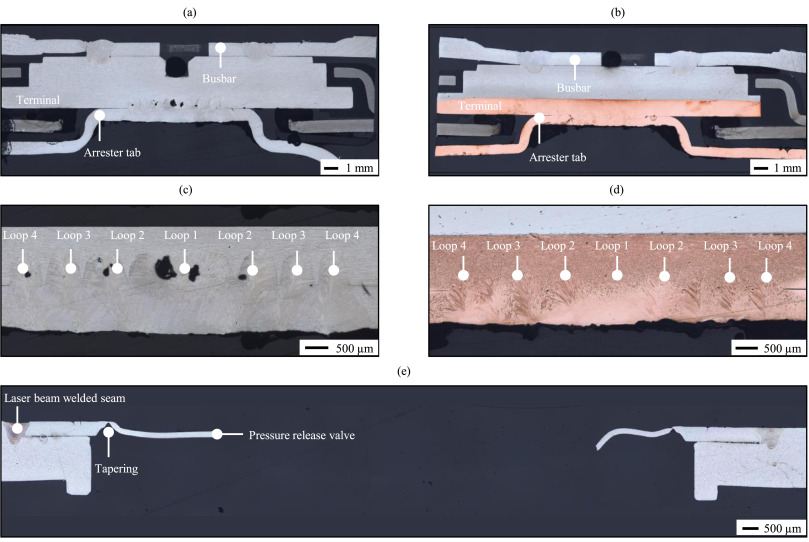Cell teardown and characterization of a CATL LFP prismatic battery from a Tesla Model 3
🔋 What batteries are used in the Tesla model 3?
The Model 3 initially used the same 18650 cylindrical NCA battery packs as the Model S and Model X. After that, Tesla iterates with new batteries. The batteries used by Tesla include 21700 cylindrical NCA battery cells made by Panasonic and other manufacturers. This battery is used in the vast majority of performance and remote versions of the Model 3. Tesla is also using 21700 cylindrical nickel-cobalt-manganese (NCM) batteries, which are used in Tesla cars manufactured in China and Berlin. In addition, Tesla has started using CATL’s prismatic lithium iron phosphate (LFP) batteries in the standard Model 3.
🔋 The prismatic battery cell analyzed in this study was extracted from a battery pack of a Tesla Model 3, which was manufactured in December 2020. The battery pack had a total energy content of 55 kW h, according to the vehicle registration sheet, and consisted of two 25s1p and two 28s1p modules that were connected in a 106s1p configuration. The investigations at the individual cell level were achieved by a teardown of a vehicle module, in which the beams, end caps and cooling plate were removed using an electrical grinder (DSM20, DREMEL Europe, The Netherlands). The cell contacting system was separated and the individual cells were detached from each other allowing them to be successively dismantled from the module assembly. A careful disassembly and material extraction were performed to study the individual components of the cell. The cell was first charged and hashtag#discharge several times at C/20 to determine the reversible cell capacity. Afterward, the cell was discharged completely using a constant current (CC) of 1 A, which corresponds to a c-rate of C/160, followed by a constant voltage (CV) discharge at 2.65 V, before transferring the cell to a customized glovebox.
Cell teardown and characterization of an automotive prismatic LFP battery
Highlights
•Thorough benchmarking of a state-of-the-art prismatic LFP cell from a Tesla Model 3
•Detailed reconstruction of the cell architecture and manufacturing steps
•In-depth analysis of material composition and properties using SEM and EDX
•Electrochemical performance assessment by rate capability tests and EIS measurements
•Comprehensive electrolyte composition analysis using IC, GC-FID, and ICP-OES analyses
A key challenge in lithium-ion battery research is the need for more transparency regarding the cell design and production processes of battery as well as vehicle manufacturers. This study comprehensively benchmarks a prismatic hardcase LFP cell that was dismounted from a state-of-the-art Tesla Model 3 (Standard Range). The process steps and manufacturing peculiarities were traced by disassembling the cell and analyzing the characteristics on the material level. A butterfly-design with two jelly rolls was found for the cell design in order to minimize the void volume (6.4%). Cross-sections and microscopy analyses from the cell cap revealed the application of multiple laser-welding processes that are needed to provide a high stability and tightness. The coatings of the approximately 22 m long electrodes showed a high homogeneity with thickness fluctuations less than 2 µm. Scanning electron microscopy images revealed a pure graphite anode and a bimodal particle distribution within the lithium iron phosphate cathode, whereby the edges of the cathode were covered in a 27 µm thick aluminum oxide (Al2
O3) insulation layer. Electrochemical analyses were performed showing the improved performance of the inherent electrolyte over a common LP572 electrolyte. A gravimetric energy density of 163 Wh/kg and a volumetric energy density of 366 Wh/l was determined based on a nominal cell capacity of 161.5 Ah. Overall, the purpose of this work is to demonstrate which design decisions and manufacturing challenges are addressed in industrial cell production, so that the focus of academic research can align with the state-of-the-art.

1. Introduction
2. Experimental
2.1. Cell teardown and material extraction
2.2. Structural and elemental analysis
2.3. Coin cell testing

2.4. Three-electrode cell testing
3. Results and discussion
3.1. Cell architecture
3.2. Electrode design
3.3. Material characterization
3.4. Electrochemical characterization
4. Conclusion
This study addressed the lack of transparency in the design and production of automotive-grade lithium-ion cells by comprehensively investigating a 161.5 Ah prismatic flat wound hardcase cell from a state-of-the-art Tesla Model 3. The cell was disassembled to the material level to trace process steps and manufacturing peculiarities. Considering the LFP cathode, a specific energy of 163 Wh/kg and an energy density of 366 Wh/l were measured at the cell level. This results primarily from the low void volume of 6.4% and thin current collector foils with thicknesses of 5 µm and 12 µm for copper and aluminum, respectively. The jelly rolls were attached to the lid in a butterfly design, providing accessibility for the welding processes. Cross-sections and microscope analyses from the cell cap revealed the application of multiple laser-welding processes, providing a high mechanical stability and air-tightness. The coatings of the electrodes showed a high homogeneity with thickness fluctuations less than 2 µm. Scanning electron microscopy images revealed a pure graphite anode and a bimodal particle distribution within the LFP cathode, with the edges of the cathode covered with an Al2O3 insulation layer. Electrochemical analyses showed improved performance of the inherent electrolyte over a common LP572 electrolyte. Additionally, a relatively low anode tortuosity of 3.3 ± 0.4 was observed. The findings support the development of more efficient and cost-effective lithium-ion batteries for electric vehicles. Overall, this study serves as a benchmark for understanding the complex processes and materials involved in the design and production of prismatic hardcase cells, and provides a foundation for future industrial and academic research aiming at the optimization of the performance and cost-effectiveness of lithium-ion batteries.
Learn more about NEWARE
PDF: CATL LFP battery
Detail: Cell teardown and characterization of an automotive prismatic LFP battery
